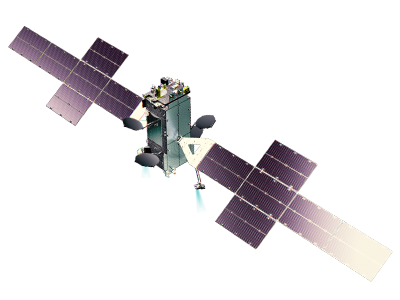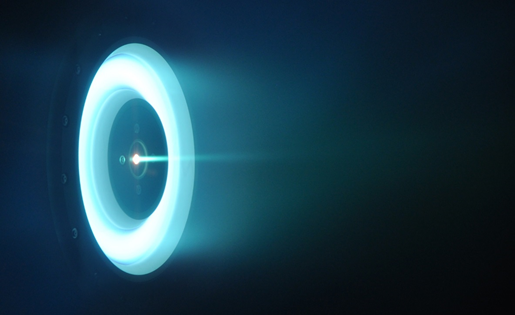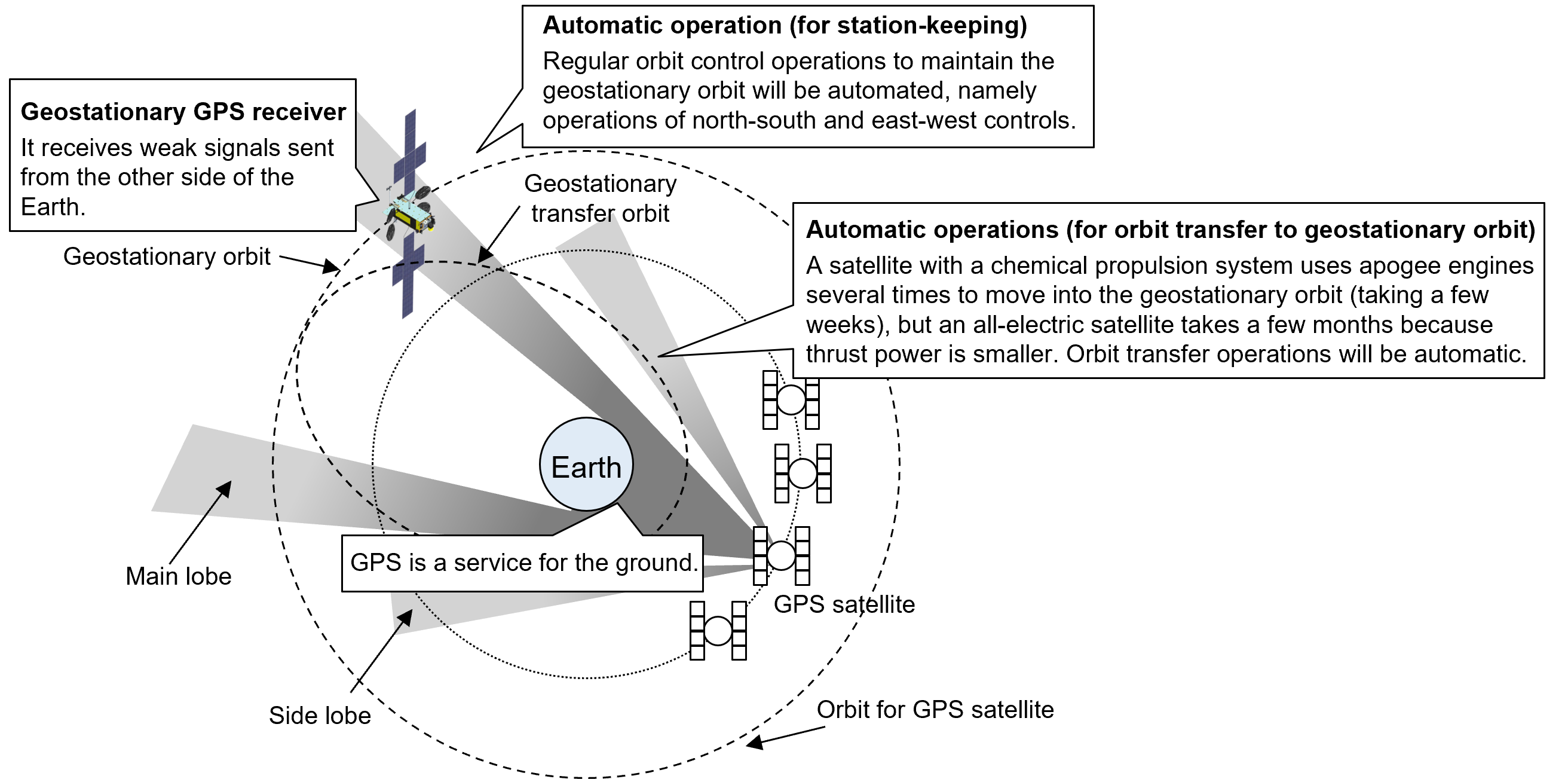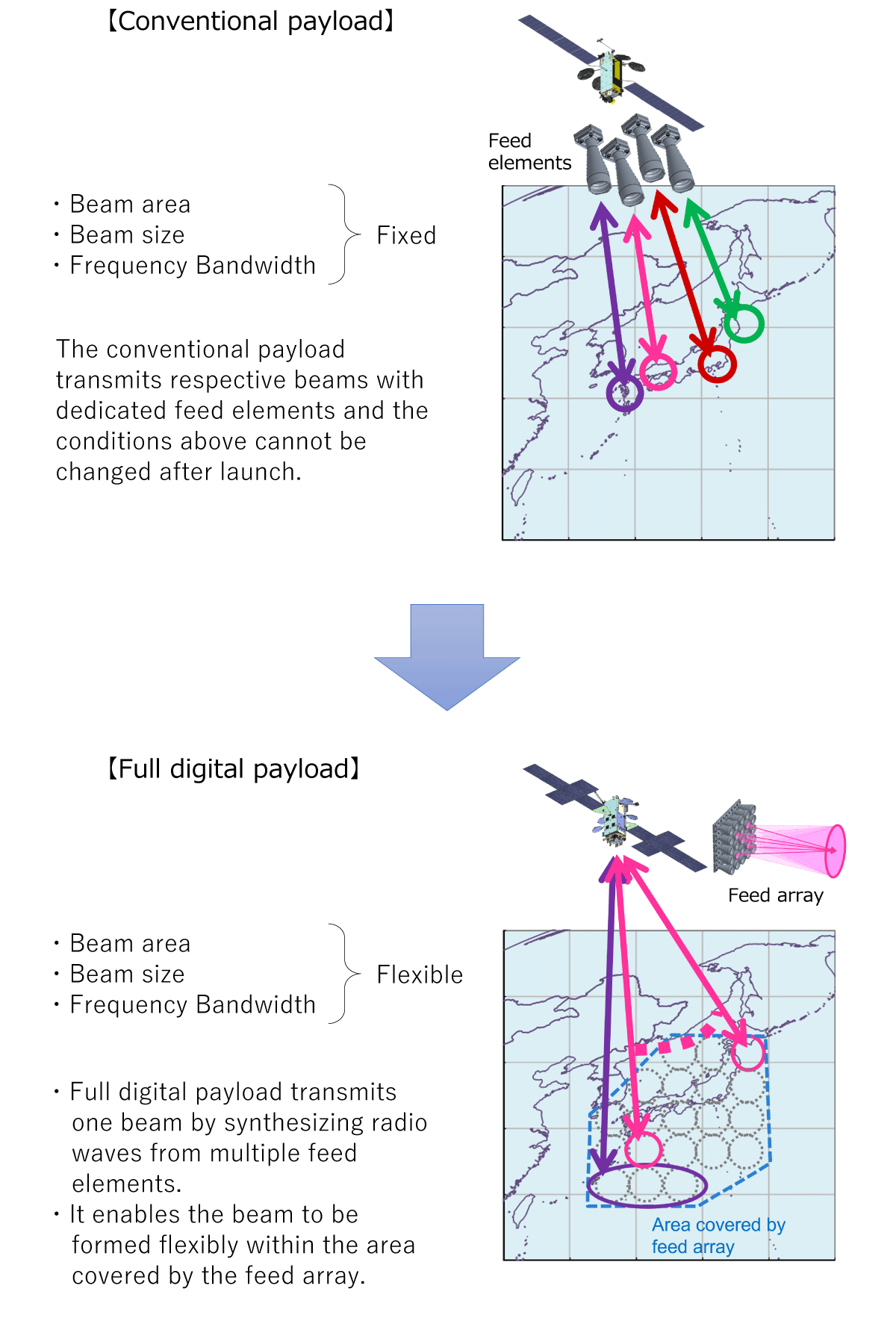- HOME >
- Satellite Projects >
- ETS-9

Mission
Engineering Test Satellite-9 is a demonstration satellite to achieve next generation geostationary satellite communication that will be internationally competitive in the 2020s. To achieve this, Engineering Test Satellite-9 will verify communication technology that meets market needs, and satellite bus (platform) technology to load communication instruments.

Engineering Test Satellite 9
In recent years, international competition for commercial communication satellites has become fiercer due to the global expansion of the broadband environment. Accordingly, communication services require “larger communication volume” to reduce communication costs and “more flexible communication” to meet widespread and changing demands for different times of day and different areas respectively. As a result, power supply to a satellite onboard communication instrument tends to increase; hence a larger satellite bus is necessary.
Technology
Satellite bus technology to be demonstrated by Engineering Test Satellite-9 will increase power supply and reject a large amount of waste heat generated from onboard instruments. In addition, we make satellites lighter with advanced technology such as all-electric satellite technology so that we can reduce the overall satellite lifecycle costs from the launch till the end of its operations. Thanks to the lighter mass, a satellite can be launched by a reasonably priced launch vehicle. These technologies will contribute to shortening the satellite manufacturing period and reducing the costs as well as will make achievement of meeting requirements and expectations in the commercial satellite market.
We have been working together with our prime manufacturer, Mitsubishi Electric Corporation, from the design phase to aim at acquiring highly competitive satellite bus technology in the global market. Regarding the onboard payload, The Ministry of Internal Affairs and Communications and The National Institute of Information and Communications Technology are in charge of communication instruments to be verified on board Engineering Test Satellite-9. And The Ministry of Education, Culture, Sports, Science and Technology and JAXA are in charge of the full digital payload.
All-electric satellite technology
An all-electric satellite means a satellite equipped with an electric propulsion system such as an ion engine and a hall thruster. The satellite will use the electric propulsion system instead of a chemical propulsion system to transfer to the geostationary orbit after it is separated from a launch vehicle, and to control attitude and station-keeping maneuvers. In the case of a satellite with the conventional chemical propulsion system, the propellant accounts for the largest percentage of the total satellite mass at the time of launch. By reducing this burdensome volume of propellant, we can load more instruments for communications while cutting launch costs because the heavier the satellite mass becomes the higher the launch costs will be. We can drastically reduce the volume of propellant for Engineering Test Satellite-9 by installing a high thrust hall thruster that can inject a large satellite into the geostationary orbit.


hall thruster
Autonomous orbital maneuver using geostationary GPS receiver
For satellite operations, the orbit has to be regularly determined, and its control plan has to be routinely compiled. Engineering Test Satellite-9 can autonomously control its orbit by utilizing orbit information acquired through the geostationary GPS receiver to reduce the burden on operators. That will diminish not only operational costs but also the likelihood of human error.

Larger power/Advanced heat control technology
For Engineering Test Satellite-9, we plan to increase its power generation to over 25kW, which is expected to be required in the 2020s. The satellite will also perform technological demonstrations of lighter solar array paddles, a lighter and high-efficient power generation system, and the advanced heat discharge technology of the thermal control system.

Full Digital Payload
Conventional payloads require throughput and cover area for each beam configuration to be defined for the expected data traffic demand prior to the launch. The configuration cannot be changed after the launch even if the actual demand is different.
The full digital payload enables flexible changes of the setting for each beam in orbit through digitization, which allows flexible changes of beam areas and throughput (bandwidth) and so on. The capability to change the service configuration allows higher communication flexibility and it enhances the competitiveness of satellites in the market.

Specifications
| Items | Specifications |
| Designed life | 16 years (Except payload) |
| Mass | 4.9 t |
| Orbit | Geostationary orbit 36,000 km |
| Power generation | Over 25kW |
| Planned Launch Year | FY 2025 |
| Launch vehicle | H3 Launch Vehicle |
| Prime contractor | Mitsubishi Electric Corporation |
